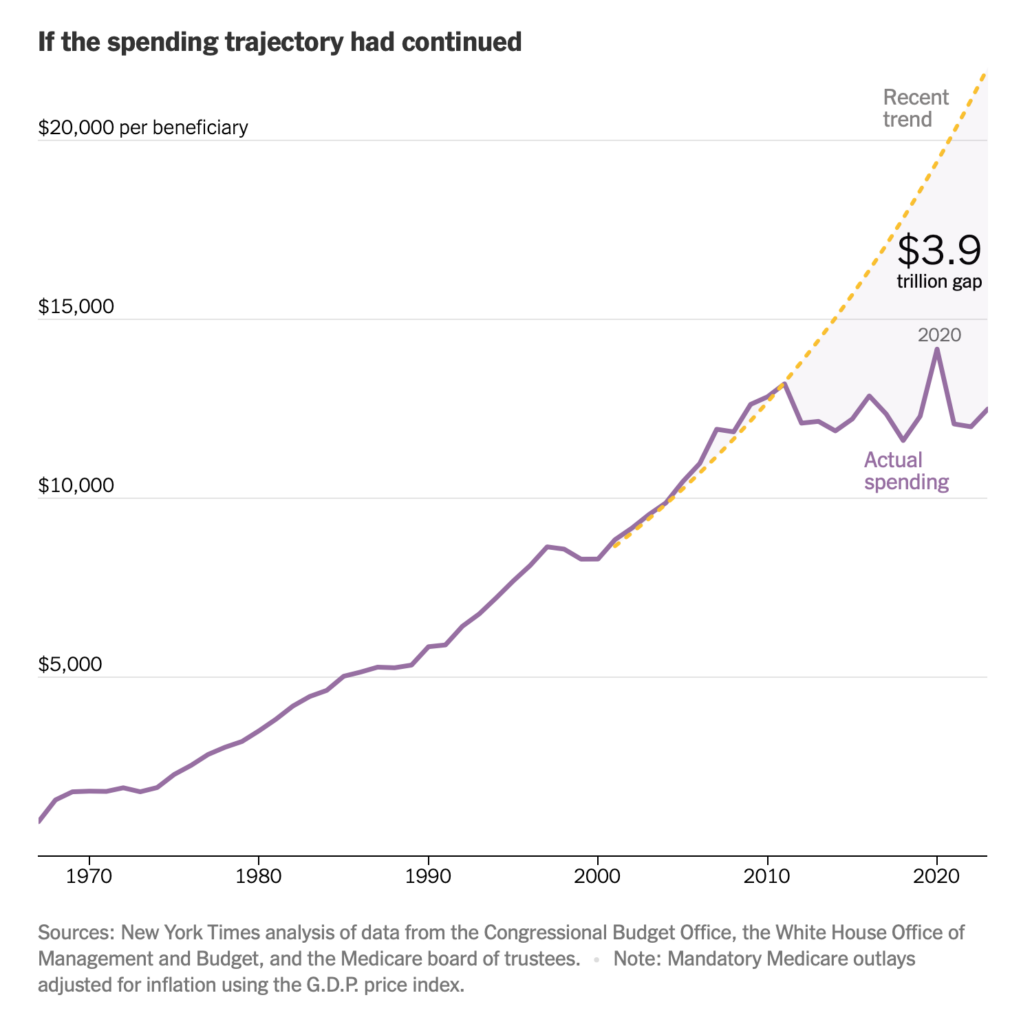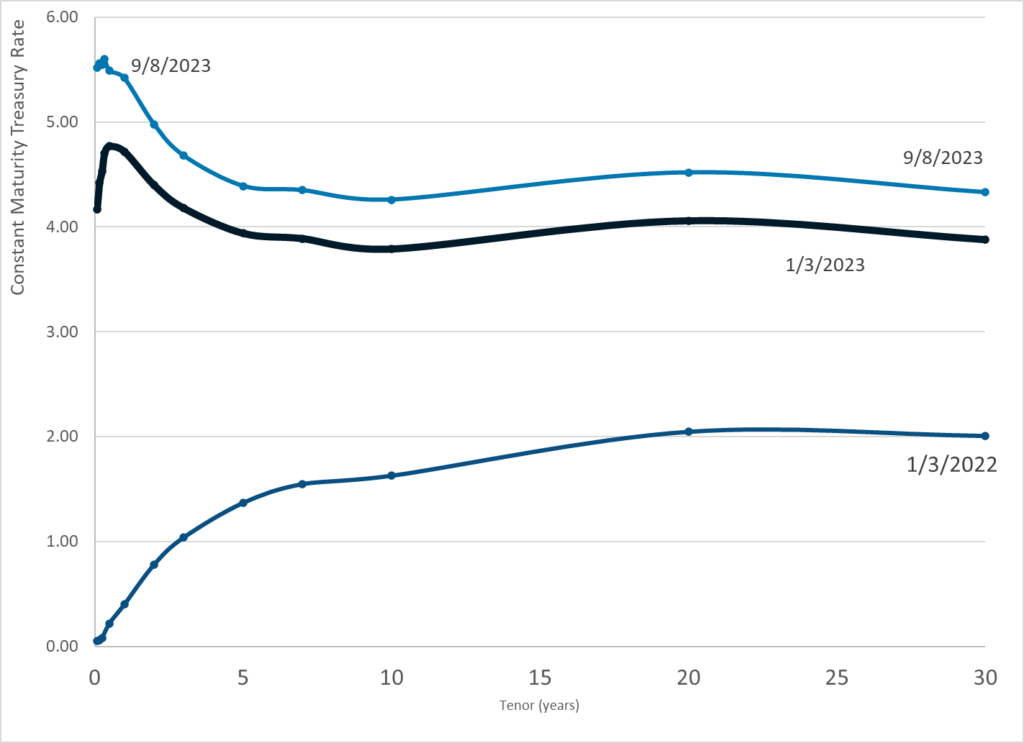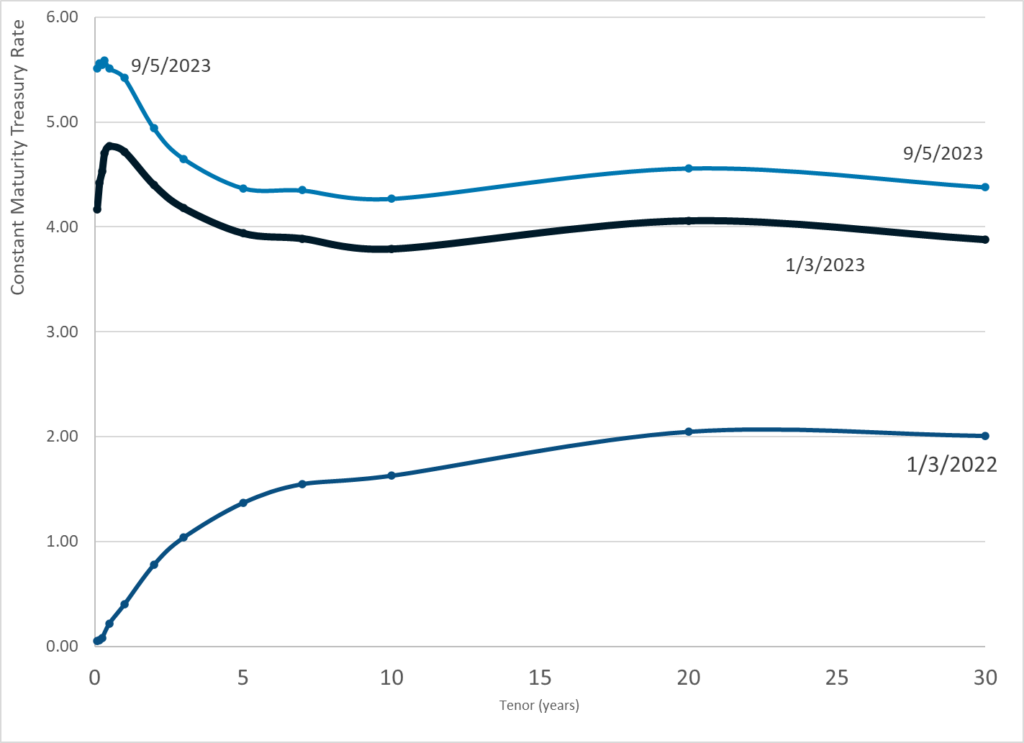Link: https://home.treasury.gov/resource-center/data-chart-center/interest-rates/TextView?type=daily_treasury_yield_curve&field_tdr_date_value_month=202309
Graphic:
Publication Date: 20 Sept 2023
Publication Site: Dept of Treasury
All about risk
Link: https://home.treasury.gov/resource-center/data-chart-center/interest-rates/TextView?type=daily_treasury_yield_curve&field_tdr_date_value_month=202309
Graphic:
Publication Date: 20 Sept 2023
Publication Site: Dept of Treasury
Graphic:
Publication Date: 19 Sept 2023
Publication Site: Treasury Dept
Graphic:

Publication Date: 13 Sept 2023
Publication Site: Treasury Dept
Link: https://www.washingtonpost.com/investigations/2023/09/12/us-overdose-deaths-opioid-crisis/
Excerpt:
The number of prescription opioid pain pills shipped in the United States plummeted nearly 45 percent between 2011 and 2019, new federal data shows, even as fatal overdoses rose to record levels as users increasingly used heroin, and then illegal fentanyl.
The data confirms what’s long been known about the arc of the nation’s addiction crisis: Users first got hooked by pain pills saturating the nation, then turned to cheaper and more readily available street drugs after law enforcement crackdowns, public outcry and changes in how the medical community views prescribing opioids to treat pain.
The drug industry transaction data, collected by the Drug Enforcement Administration and released Tuesday by attorneys involved in the massive litigation against opioid industry players, reveals that the number of prescription hydrocodone and oxycodone pills peaked in 2011 at 12.8 billion pills, and dropped to fewer than 7.1 billion by 2019. Shipments of potent 80-milligram oxycodone pills dropped 92 percent in 2019 from their peak a decade earlier.
Many of the counties with the highest fentanyl death rates — in hard-hit states such as West Virginia, Kentucky and Ohio — started out with alarmingly high doses of prescription pills per capita, according to a Washington Post analysis of the DEA data and federal death records.
Counties with the highest average doses of legal pain pills per person from 2006 to 2013 suffered the highest death rates in the nation over the subsequent six years.
….
Annual overall overdose deaths reached a grim milestone in 2021, surpassing 100,000 for the first time in U.S. history. More than 110,000 people died of drug overdoses in 2022, two-thirds of whom succumbed to synthetic opioids such as fentanyl, according to estimates by the Centers for Disease Control and Prevention.
Author(s): Rich, Steven; Ovalle, David
Publication Date: 12 Sep 2023
Publication Site: Washington Post
Graphic:

Excerpt:
For decades, runaway Medicare spending was the story of the federal budget.
Now, flat Medicare spending might be a bigger one.
Something strange has been happening in this giant federal program. Instead of growing and growing, as it always had before, spending per Medicare beneficiary has nearly leveled off over more than a decade.
The trend can be a little hard to see because, as baby boomers have aged, the number of people using Medicare has grown. But it has had enormous consequences for federal spending. Budget news often sounds apocalyptic, but the Medicare trend has been unexpectedly good for federal spending, saving taxpayers a huge amount relative to projections.
….
Some of the reductions are easy to explain. Congress changed Medicare policy. The biggest such shift came with the Affordable Care Act in 2010, which reduced Medicare‘s payments to hospitals and to health insurers that offered private Medicare Advantage plans. Congress also cut Medicare payments as part of a budget deal in 2011.
But most of the savings can’t be attributed to any obvious policy shift. In a recent letter to the Senate Budget Committee, economists at the Congressional Budget Office described the huge reductions in its Medicare forecasts between 2010 and 2020. Most of those reductions came from a category the budget office calls “technical adjustments,” which it uses to describe changes to public health and the practice of medicine itself.
Older Americans appear to be having fewer heart attacks and strokes, the likely result of effective cholesterol and blood pressure medicines that became cheap and widely used in recent years, according to research from Professor Cutler and colleagues. And drug makers and surgeons haven’t developed as many new blockbuster treatments recently — there has been no new Prozac or angioplasty to drive up spending. (Medicare is currently barred by statute from covering the new class of expensive anti-obesity drugs.)
….
Medicare may even wind up saving money because of Covid-19 — because the older Americans who died from the disease tended to have other illnesses that would have been expensive to treat if they had survived, according to an analysis from the Medicare actuary.
Author(s): Sanger-Katz, Margot; Parlapiano, Alicia
Publication Date: 5 Sept 2023
Publication Site: NY Times
Graphic:

Publication Date: 8 Sept 2023
Publication Site: Department of Treasury
Link: https://www.soa.org/resources/research-reports/2023/unhealthy-longevity-us/
Graphic:


Excerpt:
The SOA Research Institute’s Mortality and Longevity Strategic Research Program is pleased to make available a research report that quantifies differences in mortality and disease prevalence by health status. Additionally, period life tables by health status, sex, and age are available in Appendix D.
Author(s):
Natalia S. Gavrilova, Ph.D.
Leonid A. Gavrilov, Ph.D.
NORC at the University of Chicago
Publication Date: August 2023
Publication Site: Society of Actuaries
Graphic:

Publication Date: 5 Sept 2023
Publication Site: Treasury Dept
Link: https://www.osha.gov/fatalities
Archive data: https://www.osha.gov/fatalities/reports/archive
Excerpt:
This page provides data on work-related fatalities that occurred under Federal OSHA and State Plan jurisdiction for cases that have been closed or citations issued on or after January 1, 2017.
Employers must report worker fatalities to OSHA within eight hours. OSHA investigates all work-related fatalities in all covered workplaces. The agency has up to six months to complete an investigation and determine whether citations will be issued.
The table below can be modified or searched by inserting additional information in the boxes above each column.
COVID-19-related fatalities are provided in the “COVID-19” tab below, and are not included in the CY 2017-22 list.
Publication Date: accessed 5 Sep 2023
Publication Site: OSHA, Department of Labor